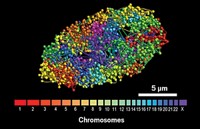Advertisement
Grab your lab coat. Let's get started
Welcome!
Welcome!
Create an account below to get 6 C&EN articles per month, receive newsletters and more - all free.
It seems this is your first time logging in online. Please enter the following information to continue.
As an ACS member you automatically get access to this site. All we need is few more details to create your reading experience.
Not you? Sign in with a different account.
Not you? Sign in with a different account.
ERROR 1
ERROR 1
ERROR 2
ERROR 2
ERROR 2
ERROR 2
ERROR 2
Password and Confirm password must match.
If you have an ACS member number, please enter it here so we can link this account to your membership. (optional)
ERROR 2
ACS values your privacy. By submitting your information, you are gaining access to C&EN and subscribing to our weekly newsletter. We use the information you provide to make your reading experience better, and we will never sell your data to third party members.
Analytical Chemistry
Tracking mRNA Particles
3-D optical imaging is used to follow mRNA particles inside yeast cells with nanometer-scale precision
by Celia Henry Arnaud
October 11, 2010
| A version of this story appeared in
Volume 88, Issue 41
The motion of individual messenger RNA particles can be tracked in three dimensions with nanometer-scale precision via optical imaging, W. E. Moerner and coworkers at Stanford University report (Proc. Natl. Acad. Sci. USA, DOI: 10.1073/pnas.1012868107). Using a recently developed 3-D microscopy method with a so-called double-helix point spread function, the researchers followed the position of single mRNA particles in live yeast cells. Because yeast cells are spherical, 3-D measurements are necessary to provide complete information about the dynamics of the system. In fact, they found that without information about the third dimension, particle motion could be incorrectly classified. The Stanford team tracked the motions of an mRNA that is expressed at low levels and doesn’t localize to particular cellular regions. The researchers used two probability tests to categorize the motion of the mRNAs as being diffusive, confined, or directed. The motion of the particles was predominantly random (diffusive), they note, although examples of confinement and directed motion were observed that could not be explained by Brownian motion. Moerner and coworkers hope that their study will provide a quantitative benchmark for the future analysis of localized mRNA particles.




Join the conversation
Contact the reporter
Submit a Letter to the Editor for publication
Engage with us on Twitter